In the beginning were the Knoll brothers.
It is a built in aspect of the human condition that we never seem to stand still. Whatever innovation man’s ingenuity devises there is always someone who will improve and eventually replace it. Generally this is to the overall benefit and some things will also filter back to the earlier technology.
The seduction
When digital imaging began its burgeoning takeover in the 1990s, there was resistance from some quarters and immediate acceptance by others, much like when digital watches and calculators came on the scene some decades earlier. Just like back then, I fell into the second category, reveling in the ability to do the equivalent of producing ‘shelloil’ on the LED display by calculating a specific number and turning it upside down. I tried various degrees of image manipulation in the early days, from adding a light beam to a lighthouse, to producing a larger than 5×4, 300dpi print from my 2mp Olympus with a multi-image stitch, to a many layered composition on the classical theme of ‘Ophelia’ a little later.
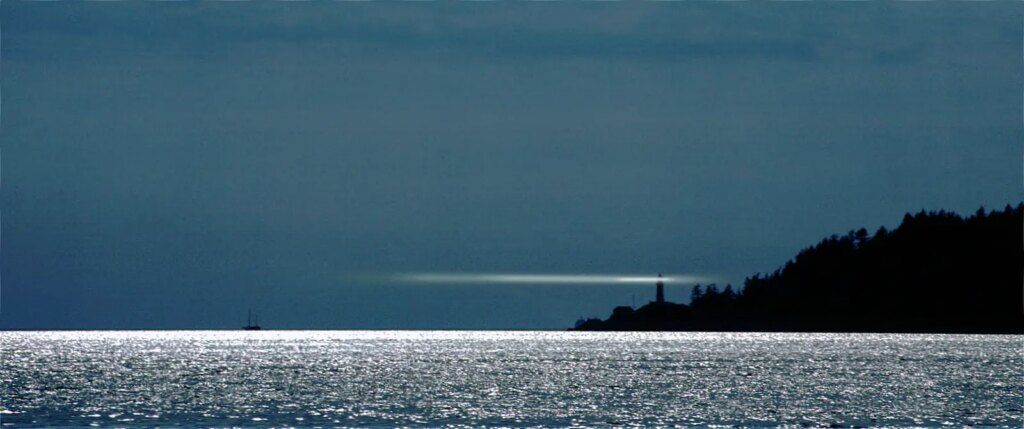
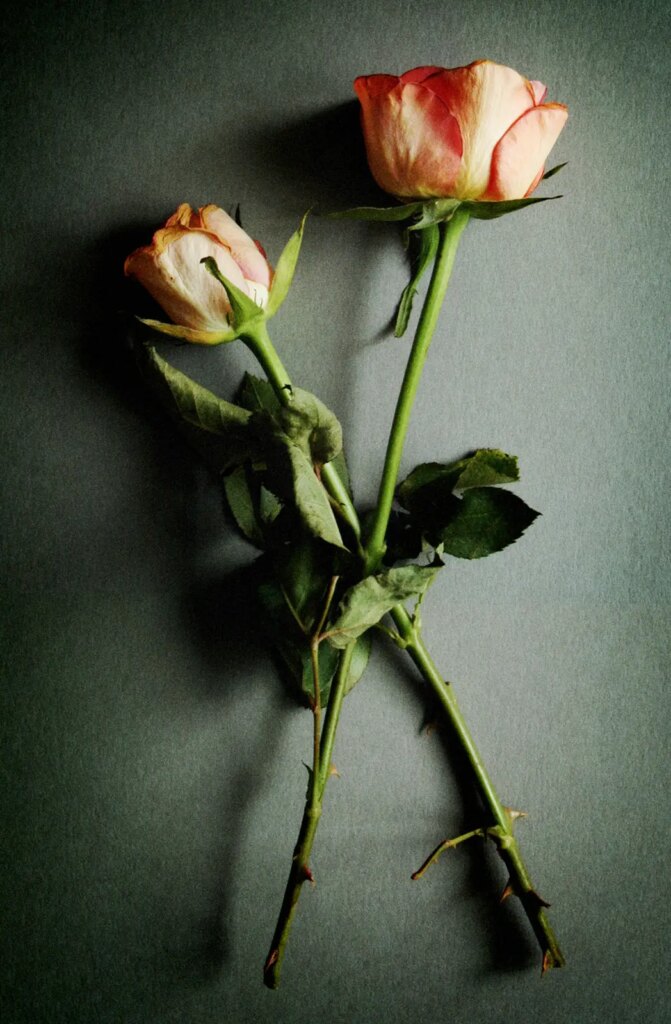
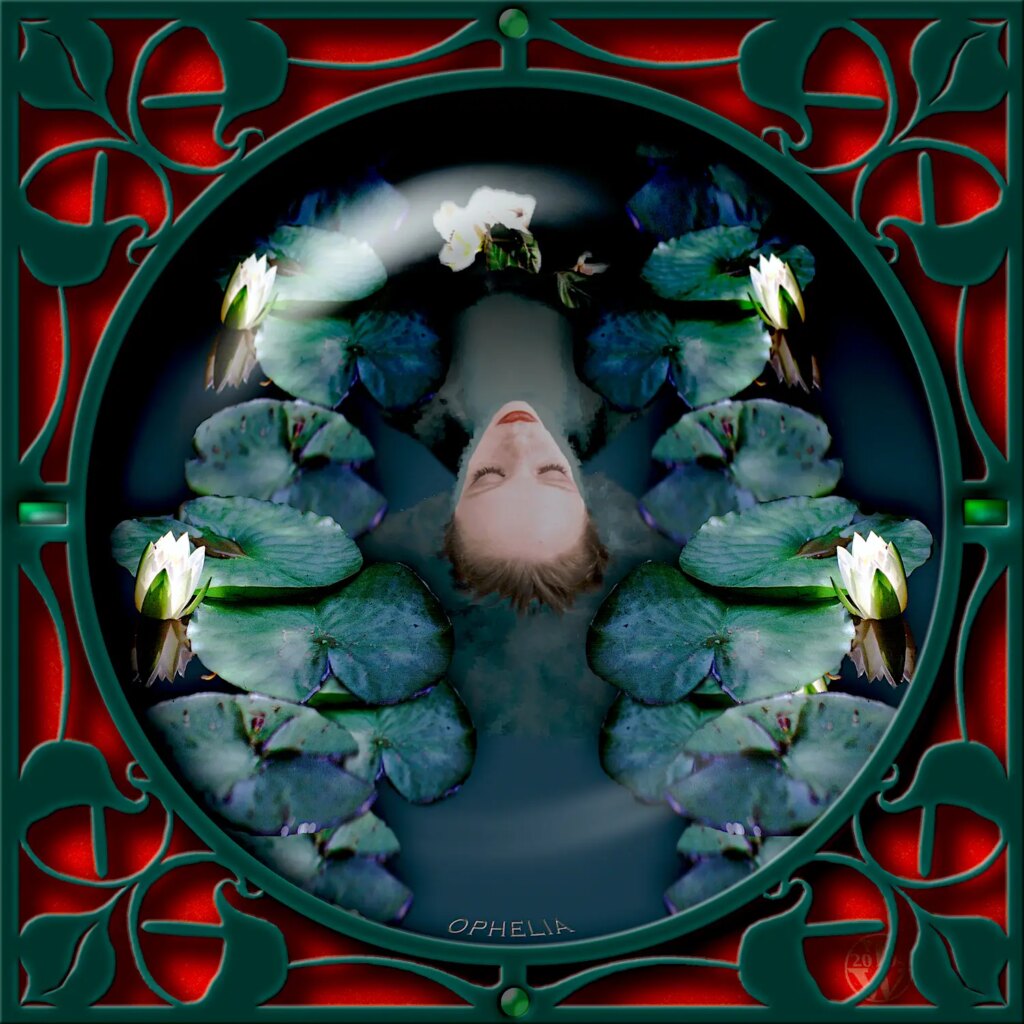
To judge by the number of articles still being written about digital post processing in magazines and online using the ubiquitous Adobe software and its many, subsequent imitators/competitors, this aspect remains a powerful attraction of the technology.
The benefits
For myself, I think this is a good thing. The more people are attracted to using a camera, the more R & D funding will be generated and the more the technology will advance. This is not always perfect of course, all advances in knowledge bring good and bad in their wake. On balance, the net result is usually to the good and benefits everyone who uses the technology responsibly.
We have seen this in action all through photography’s history with cameras evolving from something that required considerable effort, study and dedication in order to produce a good photograph into a tool that is easy to use and produces amazingly good images almost automatically. We see some simply staggeringly good images that would never have seen the light of day previously, either because the equipment available was simply not up to the job or the photographer would not have gained the necessary, difficult, technical skills to fulfil their vision but which are now built in to cameras and software to help them. This is not in any way disparaging. I know we analogue types still put ourselves through it but, let’s face it, we enjoy the ritual, don’t we? In practical terms it isn’t the least bit necessary. It is the image that matters, not how it is made.
Maturity?
The initial novelty wears off of course. The advances available, particularly where computers are concerned, encourages a selective approach and only the things personally useful are employed. In my case, as I reverted to the hybrid workflow I had used in the early days of scanning and processing film and making prints digitally, I once again appreciated the benefits to image quality that had first persuaded me to change. It had been a definite a step up from what I had ever achieved in the darkroom and much more convenient into the bargain. Now it was also a means of extracting the same pleasure from my photography that I began to realise had been pushed aside with the advent of digital cameras.
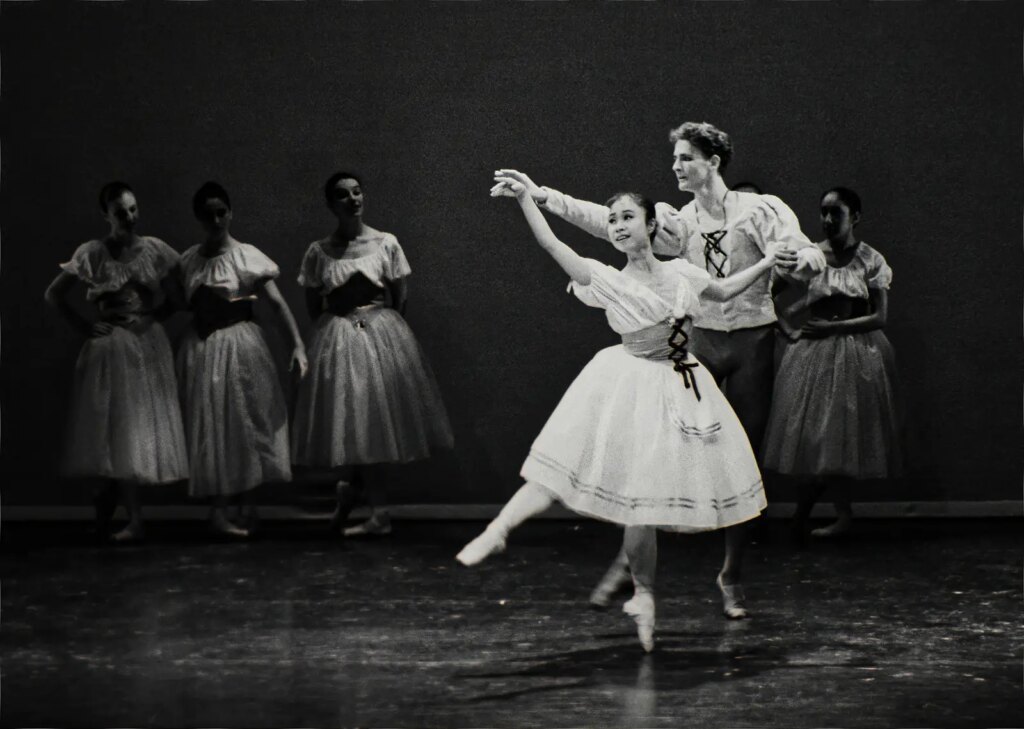
Practicality
A significant benefit to analogue workflow for me is improving the quality of the output, improving image quality. My opening comparison image of a Manchester night scene in the early 1960s is subtle but fine detail is improved and the information available greatly enhanced. A harder grade of paper in the darkroom would have brought out more detail in the mid-tones but at the expense of highlights. Using the Curves adjustment in software allows mid-tones to be given more contrast without affecting the rest of the image. In this case an application of Clarity has had much the same effect.
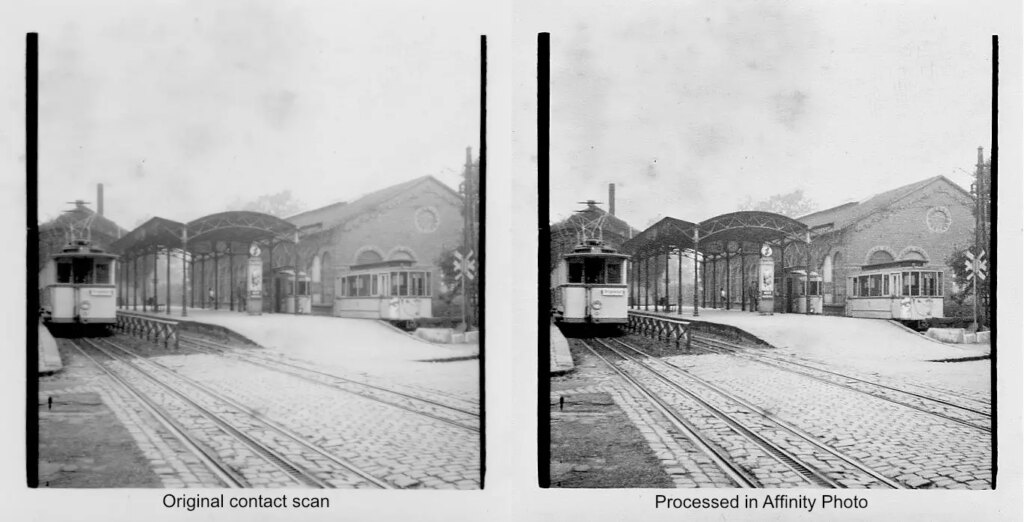
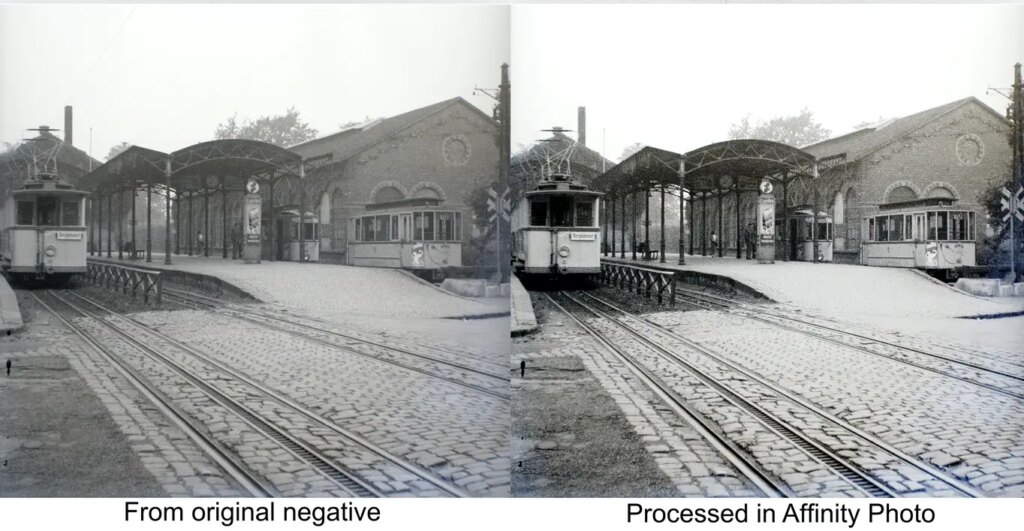
In this further example, I scanned a contemporary contact print of a photo taken on a school exchange visit to Wuppertal, Germany in the 1950s and processed a copy in Affinity Photo. The original scan with minimal processing to match the print is shown alongside the processed version. An image from the original negative with a processed version is also shown treated in the same way. Again, fine detail is enhanced.
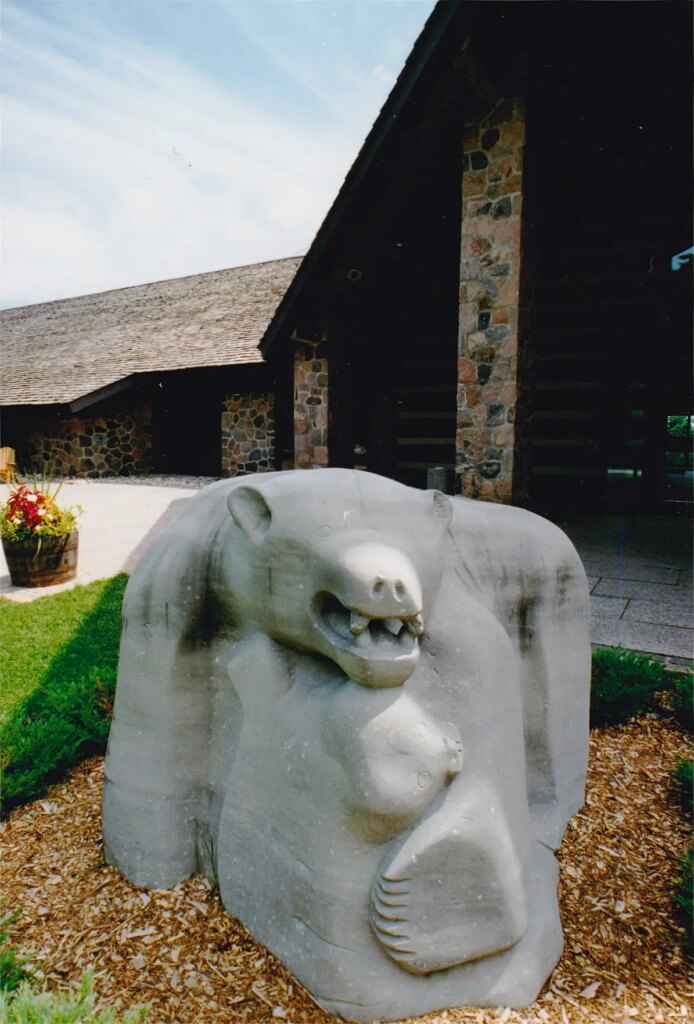
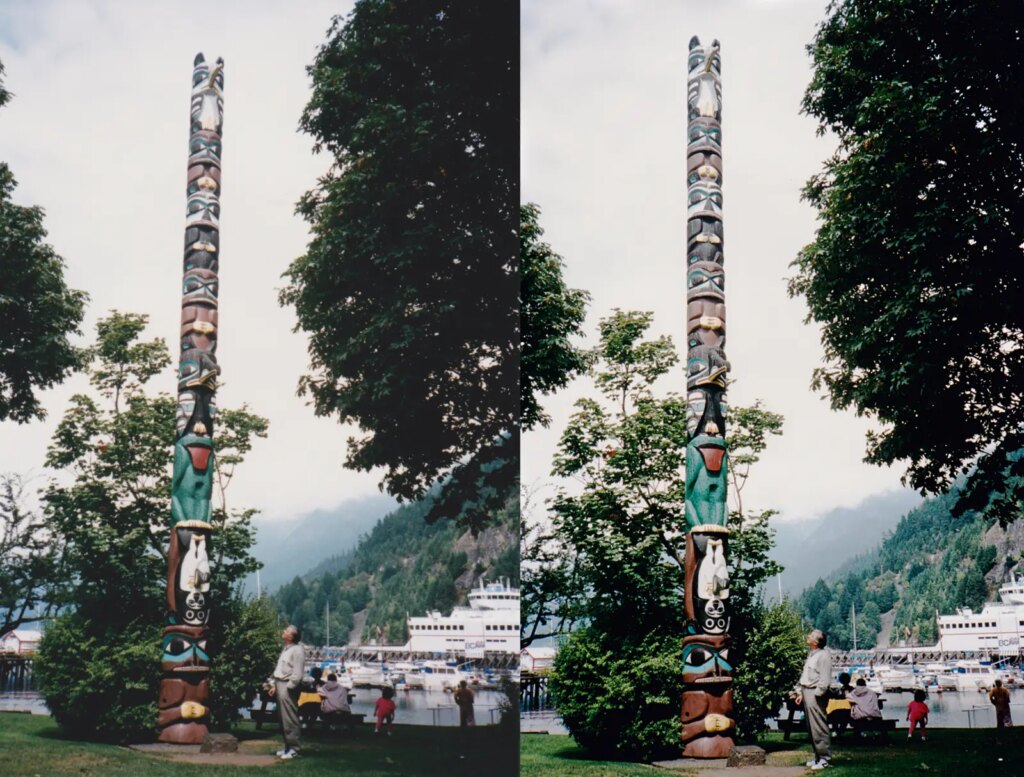

In these other examples, much later machine C41 prints were given the same treatment. Even though the quality of the original is much better, a definite improvement is still possible.
These images have only benefited from straightening, tonal and sharpness improvements and only scratch the surface of what can be done if you chose to. They also show that working from the original negative gives better results than scanning a print. I hope they make my point.
So what?
These thoughts are as much a homage to the skills of the inventors, scientists and engineers who have brought us to where we are now as it is to photography itself which has preserved my sanity through the trials and tribulations of 60 or more years of adult life. It still intrigues and delights me after all this time. A quality still image has considerable impact, whether printed on paper or viewed on a screen and I doubt it will ever pale.
So thank you Niécephore, William Henry, Louis, and brothers Thomas and John, along with all those who have gone in between. We are forever in your debt, something I will perhaps never say about the more worrying developments in computer technology.
The increased use of AI is, like all new things, good and bad in parts, the good things being very good of course, but the less desirable uses it can be put to less so. As a film photographer, I feel it is another step along the way to relinquishing all control over the process of photographic image making, or indeed any image making. This contrasts completely with the original processes where almost every stage was under the individual’s control, almost hand-made like a painting.
Along with all the other technological advances that have turned photography on its head, AI may have its place and benefits. I doubt it will ever appeal to the particular gene we seem to possess or to anyone who seeks to create something personal to themselves. The knee-jerk reaction to photography at its own birth was “art is dead” of course. But it wasn’t and in fact it developed into a much better medium as a result. So perhaps the human trait of adapting will eventually bring out the best in AI just as it has with computers themselves. Certainly, if the image is what is important rather than how it is made, it can be for the good.
Keeping an alert and open mind, we will perhaps find a way of using it alongside film and discover a hybrid of a hybrid use for it in due course.
(Photos were scanned on a multi-function printer/scanner and digitised copies of negatives produced with a Sony A3000 with 55mm Ai’d Micro Nikkor and adapters, all processed in Affinity Photo.)
Share this post:
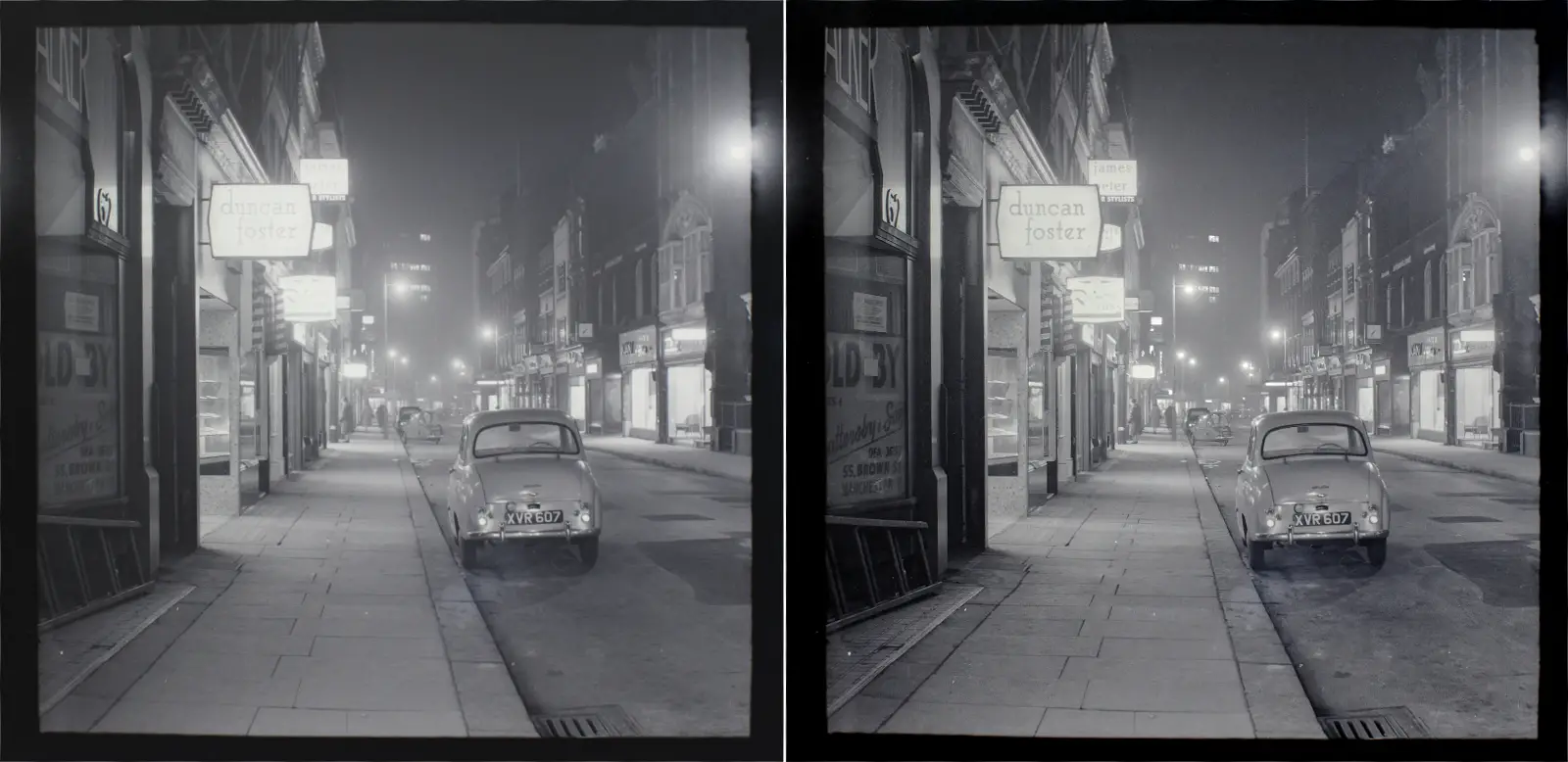








Comments
Geoff Chaplin on Progress, Progress and more Regress? Analogue Photography and the Digital World.
Comment posted: 01/08/2023
Comment posted: 01/08/2023
Jalan on Progress, Progress and more Regress? Analogue Photography and the Digital World.
Comment posted: 01/08/2023
Comment posted: 01/08/2023
Comment posted: 01/08/2023
Comment posted: 01/08/2023
Gus on Progress, Progress and more Regress? Analogue Photography and the Digital World.
Comment posted: 01/08/2023
I was recently introduced to the "Gartner hype cycle" to represent the adoption/maturity of technologies (it's a good Wikipedia article!).
With respect to AI, I think we're somewhere between the descent into the "trough of disillusionment" and the climb into the "slope of enlightenment". I'm looking forward to the AI tool in Lightroom for removing dust from negative scans (the IR dust-reduction built into my scanner just doesn't cut it), and improved spellcheck in MS word.
Love the photo of the Horseshoe Bay totem pole!
Comment posted: 01/08/2023
Huss on Progress, Progress and more Regress? Analogue Photography and the Digital World.
Comment posted: 01/08/2023
Comment posted: 01/08/2023
terry johnson on Progress, Progress and more Regress? Analogue Photography and the Digital World.
Comment posted: 01/08/2023
Comment posted: 01/08/2023
Paul Quellin on Progress, Progress and more Regress? Analogue Photography and the Digital World.
Comment posted: 01/08/2023
Comment posted: 01/08/2023
Sacha Cloutier on Progress, Progress and more Regress? Analogue Photography and the Digital World.
Comment posted: 02/08/2023
As for your last bit about AI, I agree that it can have its positives on our medium. If we look at photographic history, I’m sure that those using wet plates balked at the idea of celluloid. To this day, some black and white photographers shun the idea of color. Our community is not without its skepticisms and judgements. The manual FM2 was often kept in case the F3’s electronics failed. Autofocus was not for purists. It goes on. I myself see the potential for AI as a planning or outline tool. Tell it what you want and build your project from there. It’s like a rough sketch of what you want to produce. You want a model to be interested in your idea, you don’t need to know how to sketch to show them. AI won’t replace our passion, just like photography did not kill painting, radio did not kill written mediums, video did not, in fact, kill the radio star. Betamax is dead though, that’s not coming back.
Comment posted: 02/08/2023
Brian Nicholls on Progress, Progress and more Regress? Analogue Photography and the Digital World.
Comment posted: 08/08/2023
Comment posted: 08/08/2023